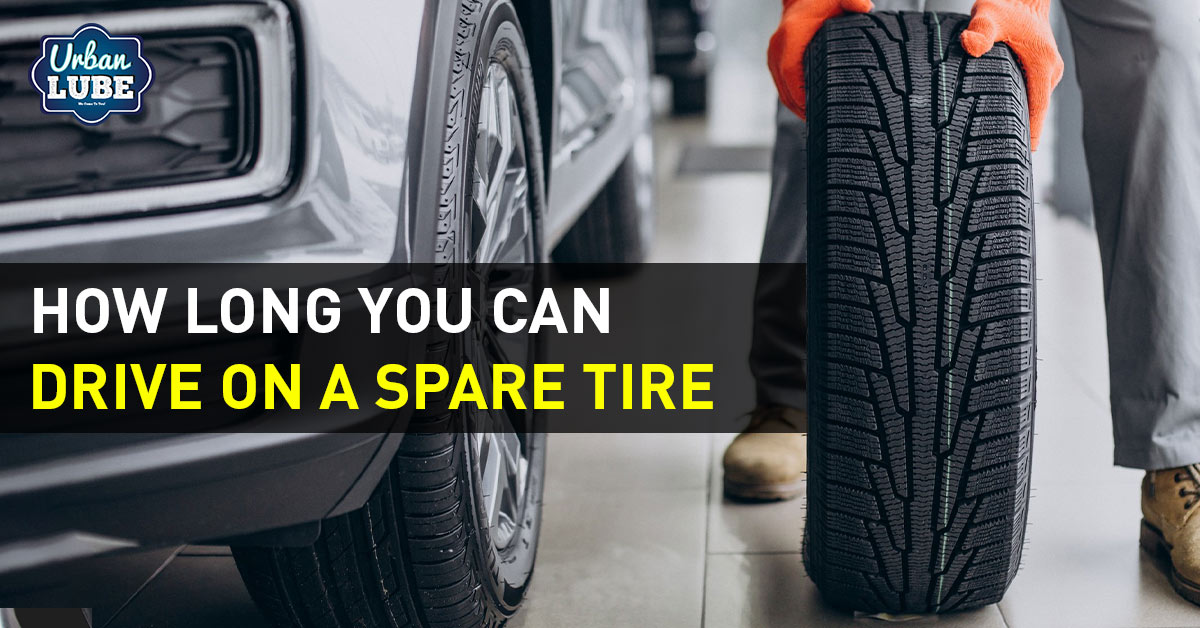
Spare tires are a vital component of any vehicle’s safety kit, providing a temporary solution when a regular tire fails. However, many drivers wonder, “How long can I drive on a spare tire?” This blog will delve into the intricacies of spare tire usage, exploring the factors that affect their lifespan and offering practical insights for motorists.
Role of Spare Tires
Spare tires, often referred to as “donuts” or “doughnuts” due to their compact size, serve as a temporary replacement for flat or damaged regular tires. They are designed to get you to the nearest repair shop or a safer location in case of a tire emergency. While spare tires are indispensable in such situations, they are not intended for long-term use.
Factors to Consider While Using Spare Tire
Spare tires are not a one-size-fits-all solution, and their lifespan can vary depending on several factors. Let’s explore these factors in detail.
Factor 1: Tire Type
The type of spare tire you have plays a significant role in determining how long you can drive on it. There are three common types:
- Compact Spare Tires
Compact spare tires, also known as “donut” spare tires, are the smallest and lightest spare tire options. They are designed for short-term use only and should not be driven on for extended periods. Most manufacturers recommend not exceeding 50 miles on a compact spare.
- Full-Size Spare Tires
Some vehicles come equipped with a full-size spare tire, which is identical to the regular tires in terms of size and tread pattern. This type of spare tire provides more flexibility and can be driven on for longer distances, making it a preferred choice for some drivers.
- Temporary or Space-Saver Spare Tires
Temporary or space-saver spare tires are larger than compact spares but smaller than full-size spares. They are designed to strike a balance between size and functionality. While they offer better handling and durability than compact spares, they are still intended for temporary use.
Factor 2: Age of the Spare Tire
The age of your spare tire is another critical factor in determining its longevity. Even if you haven’t used your spare tire, it can deteriorate over time due to environmental factors such as heat and sunlight. Most tire manufacturers recommend replacing spare tires every six to ten years, regardless of their visual condition.
Factor 3: Maintenance
Proper maintenance of your spare tire can extend its lifespan. Regularly check the tire’s inflation pressure and ensure it is in good condition. If you notice any signs of damage or wear, replace the spare tire immediately. Neglecting maintenance can lead to decreased performance and safety.
Factor 4: Driving Conditions
The driving conditions you encounter while using a spare tire also impact its longevity. Driving at high speeds, on rough terrain, or in extreme weather conditions can put additional stress on the spare tire, reducing its lifespan. It’s essential to drive cautiously and avoid putting unnecessary strain on the spare.
Factor 5: Distance Limitations
Most manufacturers provide guidelines on the maximum distance you can drive on a spare tire. These guidelines are typically conservative estimates designed to ensure your safety. Exceeding these limits can result in reduced performance and increased risk of a blowout.
Also read: Nitrogen vs Air in Tires: Which Is Better?
Signs It’s Time to Replace Your Spare Tire
- Tread Wear
Inspect the tread on your spare tire. If it’s worn down, it’s time for a replacement.
- Dry Rot
Dry rot can occur in spare tires that haven’t been used for an extended period. If you notice cracks or deterioration, replace the tire.
- Age
Even if your spare tire looks fine, it may still need replacement if it’s more than six years old. Rubber degrades over time, affecting the tire’s integrity.
- Damage
Obvious signs of damage, such as punctures or bulges, warrant immediate replacement.
Conclusion
The lifespan of a spare tire depends on various factors, including its type, age, maintenance, driving conditions, and distance limitations. It is crucial for motorists to understand that spare tires are meant for temporary use and should not replace regular tire maintenance. To ensure your safety on the road, always replace a spare tire with a proper replacement as soon as possible and adhere to manufacturer guidelines.
Contact Urban Lube for a seasonal tire replacement in Calgary.
Also read:
